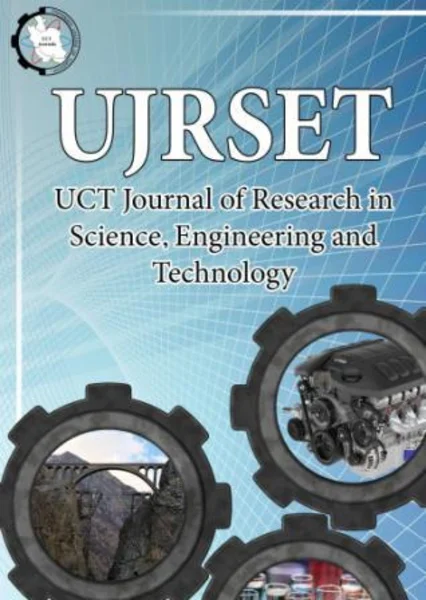-
algorithm for persian text sentiment analysis in correspondences on an e- learning social website
جزئیات بیشتر مقاله- تاریخ ارائه: 1400/08/01
- تاریخ انتشار در تی پی بین: 1400/08/01
- تعداد بازدید: 569
- تعداد پرسش و پاسخ ها: 0
- شماره تماس ژورنال: 0989394668909
by 2000, sentiment analysis had been only studied based on speech and changes in facial expressions. since then, studies have been focused on text. concerning persian text mining, studies have been conducted on the methods for extracting properties for classification and examination of opinions on social websites with an aim to determine text polarity. the present research was aimed to prepare and implement an algorithm for persian text sentiment analysis based on the following six basic emotional states: happiness, sadness, fear, anger, surprise, and disgust. in this research, sentiment analysis was carried out using the unsupervised lexical method. lexicons are divided into four categories, namely the emotional, boosters, negation, and stop lists. the algorithm was written in six different ways using different properties. in the first method, the algorithm was capable of identifying an emotional word in a sentence. the sentiment of the sentence was determined based on the given emotional word. however, it should be noted that the text itself is also important for sentiment analysis because in addition to the emotional words, other factors (such as boosters and negating factors) are also present in the sentence and affect the text sentiment. hence, the algorithm was enhanced in the subsequent methods to detect the boosters and negating words. results of running the algorithm using different methods indicated that the algorithm accuracy increased with an increase in the number properties involved. in the sixth method, an algorithm capable of identifying emotional, boosters and negative words was applied to two data samples including sentences written by typical users and sentences written by university students on an electronic learning social website. the accuracy of the algorithm with 100 data samples from typical users and 100 data samples from university students was 80% and 84%, respectively.
حوزه های تحت پوشش ژورنال
مقالات جدیدترین رویدادها
-
استفاده از تحلیل اهمیت-عملکرد در ارائه الگوی مدیریت خلاقیت سازمانی و ارائه راهکار جهت بهبود
-
بررسی تاثیر ارزش وجوه نقد مازاد بر ساختار سرمایه شرکت های پذیرفته شده در بورس اوراق بهادار تهران
-
بررسی تأثیر سطح افشای ریسک بر قرارداد بدهی شرکت های پذیرفته شده در بورس اوراق بهادار تهران
-
بررسی تأثیر رتبه بندی اعتباری مبتنی بر مدل امتیاز بازار نوظهور بر نقد شوندگی سهام با تأکید بر خصوصی سازی شرکت ها
-
تأثیر آمیخته بازاریابی پوشاک ایرانی بر تصویر ذهنی مشتری پوشاک ایرانی (هاکوپیان)
-
آسیب شناسی نوع پوشش اسلامی در بین دختران کمتر از 18 سال
-
کاربرد الگوریتم های فراابتکاری در مهندسی عمران
-
a multiwavelength study of the supernova remnant g296.8-0.3
-
surface modifications by gas plasma control osteogenic differentiation of mc3t3-e1 cells
-
effect of alkali-silica reaction together with creep on the bending reinforced concrete beams
مقالات جدیدترین ژورنال ها
-
مدیریت و بررسی افسردگی دانش آموزان دختر مقطع متوسطه دوم در دروان کرونا در شهرستان دزفول
-
مدیریت و بررسی خرد سیاسی در اندیشه ی فردوسی در ادب ایران
-
واکاوی و مدیریت توصیفی قلمدان(جاکلیدی)ضریح در موزه آستان قدس رضوی
-
بررسی تاثیر خلاقیت، دانش و انگیزه کارکنان بر پیشنهادات نوآورانه کارکنان ( مورد مطالعه: هتل های 3 و 4 ستاره استان کرمان)
-
بررسی تاثیر کیفیت سیستم های اطلاعاتی بر تصمیم گیری موفق در شرکتهای تولیدی استان اصفهان (مورد مطالعه: مدیران شرکتهای تولیدی استان اصفهان)
-
اثربخشی آموزش گروه درمانی مبتنی بر حضور ذهن بر عاطفه مثبت، انعطاف پذیری و شادکامی در بیماران مبتلا به ام اس شهر اهواز
-
ارزیابی عملکرد هیئت مدیره شرکت های تولیدی بورس اورق بهادار با رویکرد ترکیبی کارت امتیازی متوازن و روش های تصمیم گیری چندشاخصه
-
اثربخشی مداخلات معنوی - مذهبی بر عواطف ، کینه توزی و بخشش در زنان دارای تجربه بدرفتاری هیجانی همسر
-
بررسی اثر جهت داری زلزله در رفتار لرزه ای سازه های بتنی کوتاه
-
identifying the challenges of the business model of small and medium enterprises(sme) in the path of digital transformation during the covid-19 epidemic


سوال خود را در مورد این مقاله مطرح نمایید :